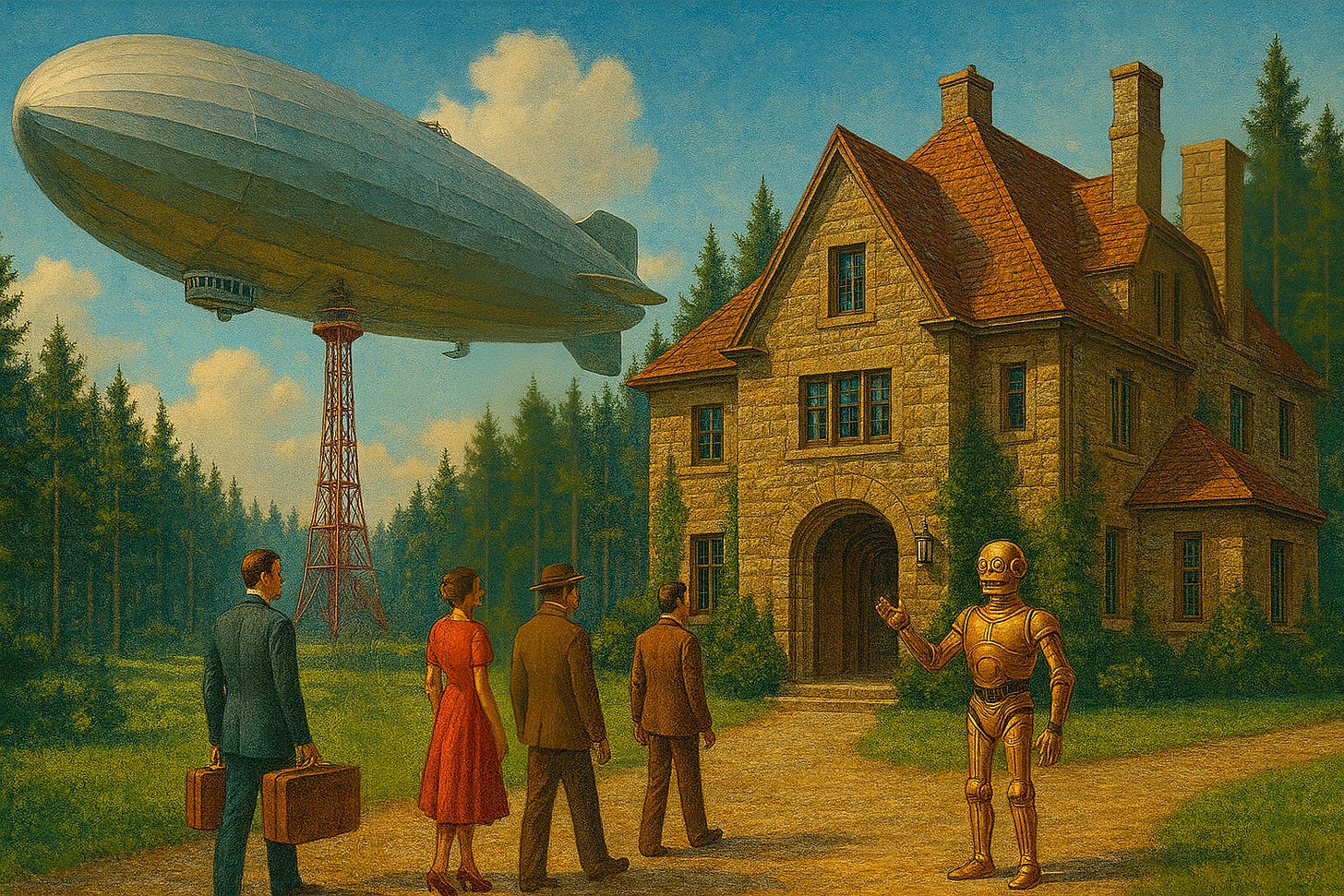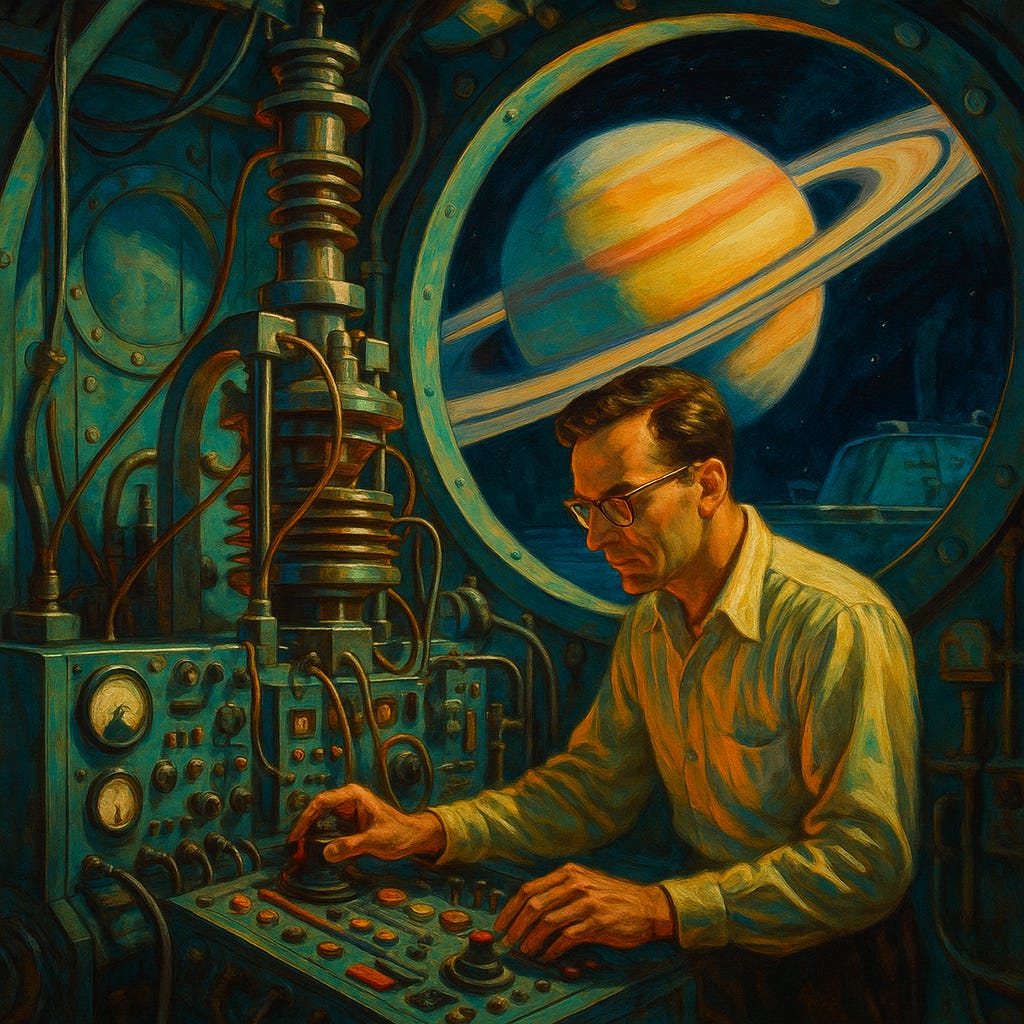The Next Civilization
Some things that must be done ...
The ages of man march in an interminable procession from the dim recesses of antiquity to the eternal horizon of futurity, one upon the other. Like clockwork, civilizations rise and fall, governed by the inevitable logic of natural law. It is therefore not surprising that our own is now passing away. Any thinking man can now clearly see that values of the powers that be are those of any society faced with certain decline.
Yet as winter is surely followed by spring, the dying embers of the old age give rise to the bright sparks of the new. With the dubious blessing of hindsight, we can survey the cultures and achievements of the past societies, and take what was best to build what will be. It is for this reason that Tom Swift has provided an overview of the culture of the Space Age. That era contains many priceless lessons, which the dissident would do well to heed. Since the economic and social conditions of our time are quite different, I am not advocating for a mindless reproduction of this culture in our time, but rather a reasoned adaptation of it for a far more decentralized and chaotic world.
While a near-term conflict with the East is unfortunately becoming increasingly probable, conditions in its aftermath might bear a closer resemblance to the world of the nineteenth century. The social solidarity of midcentury America is unlikely to return. In a cash-strapped postwar economy, the American taxpayer is unlikely to stomach massive spending on science or technology.

For this reason, any scientific advances or engineering megaprojects are likely to result from the realm of private development, much as in the Age of Discovery. Advances in computing power and artificial intelligence make such endeavours more feasible. The cost of spaceflight is already one tenth its value at the beginning of the millennium. The shift towards private science should also absolve researchers from the need to defend the niceties of liberal social democracy. Advances in biological science shall make the true nature of man impossible to ignore. However, in an age of increasing instability, the wider public might be more receptive to such findings. We shall now examine the most critical areas of culture, and what forms they might take in the next Heroic Age of Invention.
There will be a literature of technical wonder and adventure, not unlike the pulp science fiction of old. However, its subject matter cannot be a facile rerun of leopard-men on the Moon or dinosaurs on Venus, but must be consonant with the advances and discoveries of twenty-first century science. Recent discoveries of exoplanets and sunless seas in the worlds beyond Jupiter provide plenty of plausible habitats for extraterrestrials. The first glimmerings of faster-than-light travel have been sketched by a clever physicist in Mexico. The travails of terraforming, and the new environments thereby created also lead to a wealth of intriguing scenarios. Yet while twenty-first century science shall inform the settings, there will be no place for twenty-first century values. The defining ethos of this literature shall be its combination of timeless values with content derived from the most recent scientific discoveries. There are only so many archetypes, but the possibility for settings is infinite. As in all good literature , it will portray man as he is, not how one might think he ought to be. While it must at first out of necessity be distributed over the Internet, it shall eventually be published in print form, by a new wave of publishing firms.
This literature will of course be adapted into moving pictures. I have discussed at some length how it might be filmed here. Artificial intelligence will be used to speed production and lower filming costs to a feasible level. It should also be possible to film some of the old classics which have been long forgotten. No more will multi-billion dollar budgets be required.
This culture will need a new form of scientific publication. In terms of technical journals a hard-hitting apolitical alternative to Scientific American and Popular Mechanics will be necessary. It will be more practical in focus than current magazines; its principal purpose will be to aid the gentleman scientist in reproducing results. Establishing such journals will elevate the caliber of scientific research outside the academic establishment. Hence a path will open from a philosophy of blind opposition to the academic establishment to a more perfect new worldview based on the deep essence of human nature and scientific reality. When the progressive worldview ceases to be the only acceptable perspective, only then will the intellectual elite consign the concept of moral progress to the dustbin of history.
In order to establish this next Heroic Age of Invention, the way in which science and engineering are conducted must change greatly. The scientist will cease to be a public servant, and instead become a pioneer and adventurer. As the structure of society changes, it is like that science will come to be sponsored by the fortunes of great houses. This will lead to an academic ethos quite different from that of twentieth-century America. As was in the nineteenth century, grand theories refined over decades will be valued over incremental improvements. Therefore, one might again see research published in massive tomes rather than salami-sliced papers. Science will be the sport of kings, not the toil of drones. It will be closely tied with the discovery of new lands, as in the great ages of the West.

The role of the software developer will still be important, but will be far more physically oriented than today. As computational resources are at a premium in any embedded system, compiled languages will be considered far more important than interpreted ones. For this reason I recommend the study of C and Assembler instead of such languages as HTML and Javascript. The coming First Men must conform their code to the harsh realities of the laws of phyisics. There will be a new synthesis of engineering and art. It shall be combined with classical thought, in which Vitruvian principles are used to construct new structures. Yet with the aid of such new materials as carbon nanotubes this new iteration of classical architecture could take on forms we can barely begin to imagine.
These new men of science shall be cultivated in their youth through the practice of the Great Pursuits. It is through these that they will learn to master the physical world; to combine the algorithm and the atom. In this new world, the stature of the cram school will be much reduced. When the great glass palaces of corporate drones are but futile ruins, there will be no place for digital involution.
This coming age will not be one of trade and conformity, but of titanic conflict and high adventure. While the previous Heroic Age of Invention was devoted to winning the cold war, the next will be firstly concerned with the defeat of Red China, and secondly with colonial expansion into space. This new age shall be again an Age of Discovery, in which the West advances to new lands and far frontiers. There will be no more “global village” ; only that eternal horizon stretching forward and beckoning the wanderer onwards to the far reaches of space and time…..




It’s great to see an optimistic vision in right wing circles for once.
Great piece, one question on the predictions though. You said c and assembler will likely be more useful than HTML and js. For user interfaces are you imagining a return to the old press 1 to do x press 2 to do y, or are you imaging non screen interfaces, or a third option I’m not thinking of?